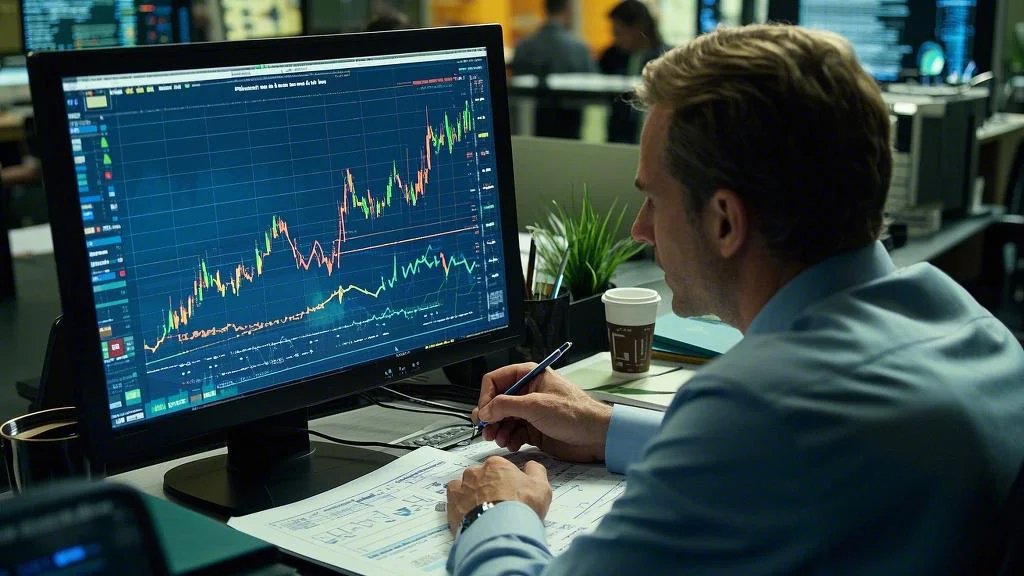Why Pre-Market Trading Strategies Are Essential for Active Traders
For active traders, pre-market trading strategies offer a unique opportunity to gain an edge before the regular market opens. Pre-market trading occurs between 4:00 a.m. and 9:30 a.m. Eastern Time, allowing traders to react to news and events that happen outside of normal trading hours. This can include earnings reports, economic data releases, or geopolitical developments. By using pre-market trading strategies, you can position yourself to capitalize on early price movements and set the tone for your trading day.
One of the key benefits of pre-market trading strategies is the ability to take advantage of volatility. Since pre-market trading typically has lower liquidity, price swings can be more pronounced, creating opportunities for quick profits. However, this also means higher risk, as prices can change rapidly. To mitigate this, many traders use limit orders to control their entry and exit points. Additionally, staying informed about overnight news and market developments is crucial for making informed decisions. By mastering pre-market trading strategies, you can stay ahead of the competition and improve your overall trading performance.
Leveraging Stock Market Futures Trading for Pre-Market Insights
To enhance your pre-market trading strategies, it’s important to understand the role of stock market futures trading. Futures contracts allow traders to speculate on the future price of an asset, such as stock indices, commodities, or currencies. Since futures markets operate nearly 24 hours a day, they provide valuable insights into market sentiment before the stock market opens. For example, if futures prices are rising, it may indicate that investors are optimistic about the market’s direction, while falling futures prices could signal pessimism.
One effective way to use stock market futures trading in your pre-market strategy is to monitor key indices like the S&P 500 or Nasdaq futures. These indices often serve as leading indicators for the broader market, giving you a sense of where stocks might head once the market opens. Additionally, futures trading can help you hedge against potential losses by locking in prices for your positions. By combining stock market futures trading with your pre-market trading strategies, you can gain a clearer picture of market trends and make more informed decisions.

Using the Best Mobile Apps for Trading on the Go
In today’s fast-paced trading environment, having access to the best mobile apps for trading is essential for executing pre-market trading strategies. These apps allow you to monitor the markets, place trades, and access real-time data from anywhere. One of the key features to look for in the best mobile apps for trading is pre-market trading functionality. Not all brokers offer pre-market trading, so it’s important to choose an app that supports this feature if you want to take advantage of early opportunities.
Another important consideration when selecting the best mobile apps for trading is ease of use. A user-friendly interface can make it easier to navigate the app and execute trades quickly, which is crucial during the fast-moving pre-market hours. Additionally, many apps offer advanced charting tools, customizable watchlists, and news feeds to help you stay informed and make better decisions. Whether you’re a beginner or an experienced trader, having the best mobile apps for trading at your fingertips can enhance your pre-market trading experience and help you stay ahead of the competition.
Exploring Algorithmic Trading Strategies for Pre-Market Success
For traders looking to automate their pre-market trading strategies, algorithmic trading strategies can be a game-changer. Algorithmic trading uses computer programs to execute trades based on predefined criteria, such as price, volume, or timing. This approach is particularly useful during pre-market hours, when markets can be less liquid and more volatile. By using algorithmic trading strategies, you can execute trades at lightning speed and take advantage of opportunities that might be missed by manual trading.
One of the key benefits of algorithmic trading strategies is their ability to remove emotions from the trading process. Since trades are executed automatically based on predefined rules, there’s no room for fear or greed to influence decisions. Additionally, algorithmic trading allows you to backtest your strategies using historical data, helping you refine your approach before risking real money. Whether you’re trading stocks, futures, or ETFs, incorporating algorithmic trading strategies into your pre-market routine can enhance your efficiency and improve your results.
Combining After-Hours Trading Strategies with Pre-Market Plans
To maximize your trading opportunities, it’s important to consider how after-hours trading strategies can complement your pre-market trading strategies. After-hours trading occurs between 4:00 p.m. and 8:00 p.m. Eastern Time, providing another window to react to news and events that occur outside of regular market hours. By combining pre-market and after-hours trading, you can extend your trading day and take advantage of opportunities that arise during these extended sessions.
One effective after-hours trading strategy is to monitor earnings reports and other corporate announcements. Many companies release earnings after the market closes, which can lead to significant price movements in after-hours trading. By staying informed and reacting quickly, you can capitalize on these opportunities. Additionally, after-hours trading can provide a chance to adjust your positions based on the day’s market activity. By integrating after-hours trading strategies with your pre-market plans, you can create a comprehensive approach that maximizes your trading opportunities and helps you stay ahead of the competition.


